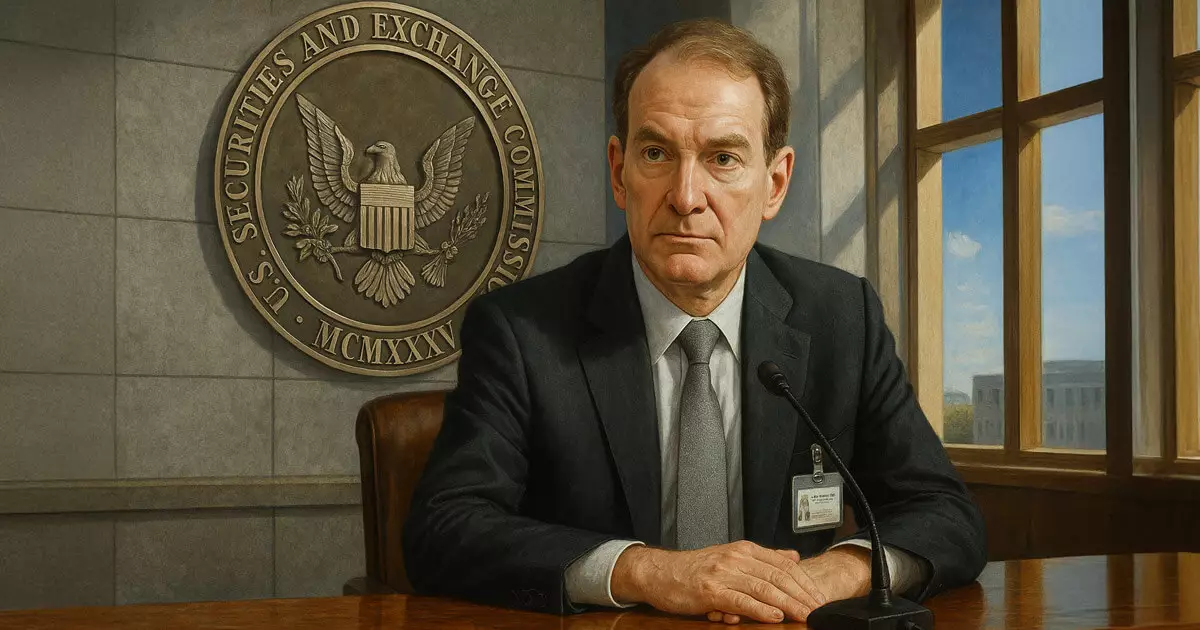The U.S. Securities and Exchange Commission (SEC) has long been viewed as an obstructor of financial innovation, particularly in the rapidly evolving world of digital assets. Under the leadership of Chairman Paul Atkins, however, there is a palpable shift in tone and strategy. Atkins’ recent statements at the SEC Speaks conference signal a break from the agency’s previous “shoot-first-and-ask-questions-later” mentality. This change is not just cosmetic; it involves a genuine reconsideration of how the SEC interacts with the vibrant crypto industry, which has been deemed “in limbo.” Instead of publicly punishing firms that attempt to innovate, the SEC is now poised to collaborate with them, an approach long overdue in a sector that thrives on cutting-edge advancement.
Building Trust through Transparency
Historically, companies in the cryptocurrency space have complained about the SEC’s opacity and lack of direction, often feeling like they were in a no-win situation—struck by enforcement actions following merely attempting to comply with vague regulations. Atkins’ acknowledgment of this historical neglect is crucial. By committing to transparency and issuing clearer guidance, he opens a pathway for businesses to navigate the tumultuous waters of regulation without fear of arbitrary penalties. “Let’s figure it out together” is not just a catchy phrase; it’s a pivotal call for partnership between regulators and innovators that could very well stimulate a resurgence in crypto-related enterprises on U.S. soil.
Economies of Scale
The SEC’s shift can potentially lead to massive economies of scale for digital asset management. By allowing firms to custody and trade both securities and non-securities in one regulated environment, Atkins heralds a vision where the once fragmented and chaotic nature of asset management is streamlined. The prospect of creating a “super-app” for financial services isn’t merely aspirational; it hints at a future where consumers can access a comprehensive suite of financial products conveniently and cost-effectively. This could democratize access and significantly lower transaction costs—not just benefitting the corporations in the space but fundamentally enhancing the user experience.
Disbanding Counterproductive Institutions
Another key element of Atkins’ new vision involves dismantling the SEC’s Strategic Hub for Innovation and Financial Technology, known as FinHub, which was characterized by its enforcement-heavy reputation. Recognizing that innovation should not be quarantined in a specialized unit but integrated throughout the regulatory framework is a bold move. This shift could prevent further bureaucratic inefficiencies and ensure that every sector of the SEC considers innovation as a guiding principle rather than an afterthought.
A Future Ready for Innovation
While Atkins’ recent disclosures come with numerous caveats—specific rule proposals are still in the works—the embrace of innovation over obstruction is a monumental pivot. The crypto industry has waited too long for clarity and support from regulators. At this juncture, the SEC’s role should evolve from that of a gatekeeper to a facilitator. If Atkins can follow through with his intentions, we could witness a renaissance of innovative financial products launching from U.S. soil, reshaping the global financial landscape in the years to come. The stakes have never been higher, and this repositioning could either lay the groundwork for a thriving digital asset ecosystem or once again retrogress into regulatory uncertainty. The choice, it seems, now stands in the hands of the SEC.

